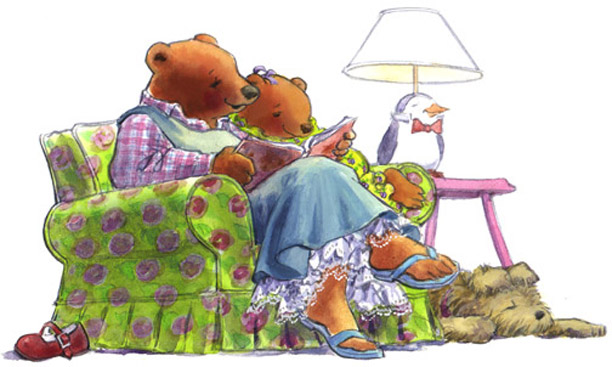On Duck Pond
Written by Jane Yolen and
illustrated by Bob Marstall
The Cornell Lab Publishing Group,
2017
Jane Yolen and Bob Marstall have
teamed up again for On Duck Pond, a
sequel to On Bird Hill. Like its predecessor,
it is a lovely, quiet book about the beauty and drama found in nature.
Again a boy and his dog take a
walk, this time by a pond that is suddenly disturbed by the arrival of a noisy
group of ducks.
Yolen uses rhyming couplets and a
few triplets to tell her story in first-person narration. Though rhyming is
difficult to do well, she does a masterful job of it, and the rhyme and
alliteration enhance the story with fun word play.
“Down they splashed. The water splattered.
/Then they chittered, whistled, chattered.”
The story is told in a symmetrical
way beginning by telling who is disturbed by the ducks: trout and turtles, a
frog, a heron, tadpoles, the water, and the boy narrator. Then the ducks move
on and the pond grows still again. The wildlife returns, the heron, turtles,
trout and fingerlings, tadpoles and the frog.
Finally, the boy senses this shared
experience has bonded the wildlife and himself, and he walks home feeling “awfully
fond of everyone on old Duck Pond.”
Marstall’s full-page pastel
illustrations echo the quiet beauty and drama of the story. They include many kinds
of ducks, birds and other wildlife that isn’t mentioned in the story.
At the end of the book, children can
learn more about the different birds and animals. They are invited to go back
and look for them in the story.
About the Author
Jane Yolen is the
author of more than 350 books including the Caldecott-winning Owl Moon; You Nest Here with Me, co-authored with her daughter Heidi E. Y.
Stemple; and the New York Times best-selling
series How Do Dinosaurs ... Jane
Yolen’s books have been translated into over 20 languages. She lives in
Hatfield, Massachusetts. Visit her website at www.janeyolen.com.
About the Illustrator
Bob Marstall has
illustrated nine nonfiction children’s books, including The Lady and the Spider which
sold over a quarter million copies and was a Rainbow Room selection. He has
also been honored with an ALA Notable award, an IRA Teachers’ Choice, a
Smithsonian Magazine Notable Book for Children, and three John Burroughs
selections. Two of his books were among the “1001 Best Books of the Twentieth
Century” in the New York Times Parent’s
Guide to the Best Books for Children, 3rd Edition. He lives in
Easthampton, Massachusetts. Visit his website at www.marstallstudio.com.





















